5 of the Most Valuable Crops You Can Grow in the US & How to Grow Them
These easy-to-grow and profitable crops are great for small farms.
5 of the Most Valuable Crops You Can Grow in the US & How to Grow Them
These easy-to-grow and profitable crops are great for small farms.
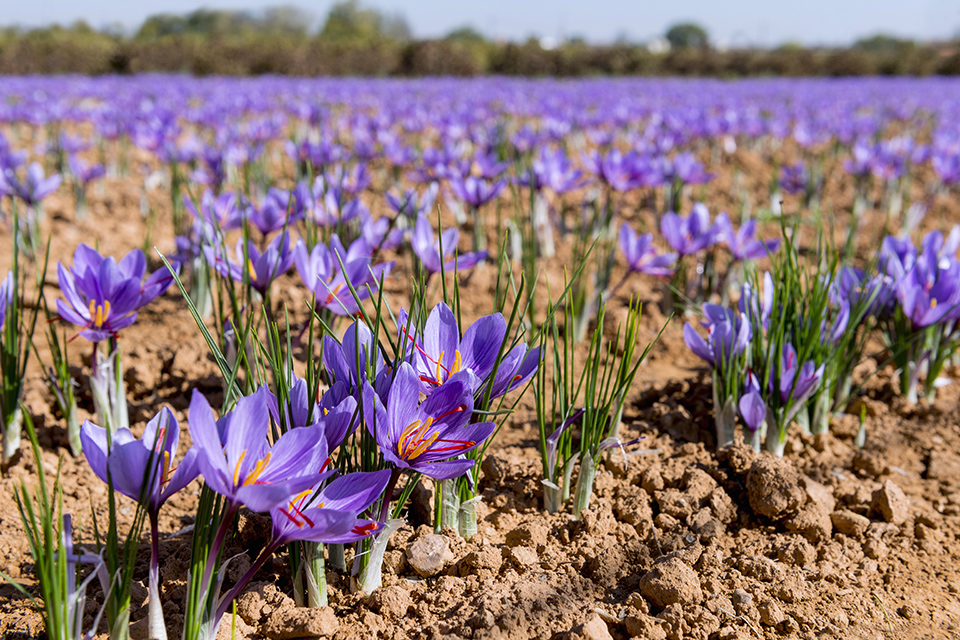
A field of saffron. Photography from Shutterstock
Saffron
The North American Center for Saffron Research and Development, a new program at the University of Vermont, hopes to make New England the new hotspot for this ancient Mediterranean herb. Selling for $5,000 to $10,000 per pound, saffron is the most expensive culinary herb in the world, mainly because it is composed of the tiny, thread-like stigmas of the crocus flower. Roughly 50,000 flowers are needed to produce a pound of the dried herb, though this requires just a quarter acre of land, hinting at just how lucrative this crop can be.
Learn More
This Immersive Farm Apprenticeship is Training the Next Generation of Farmers
Saffron (pictured above) crocuses grow best in dry regions with mild winters, such as coastal California. To help expand their viability, the University of Vermont recommends planting them in high tunnels, a simple protective structure made of plastic sheeting over a frame of PVC pipes, which allows saffron to be grown in much of the country. Crocuses are bulbs and cannot easily be reproduced from seed, so growers plant corms, the fleshy tuberous roots. A list of corm sources for crocus varieties that are suitable for commercial spice production is available here.
Ginseng
Wild ginseng root, a medicinal herb which is found in forests throughout much of the northern and eastern United States, is harvested on a commercial scale and sold for astonishing prices, largely to Asian buyers. It is also planted in open fields, though ginseng cultivated this way commands a fraction of the price, as it is not considered as medicinally potent. Wild ginseng is becoming increasingly rare, however, to the point that many states have severely restricted its harvest. “Wild-simulated” ginseng, which is planted as an understory on tree plantations and in naturally-occurring forests, has emerged as a popular, and profitable, alternative to true wild ginseng: it sells for $300 to $700 per pound.
Most native hardwood trees are suitable as a canopy for growing ginseng. The forest needs to be mature enough to cast full shade; moist, well-drained soil is ideal. It is typically planted in the fall from seed, which costs up to $200 per pound. Rake back the leaves and plant them directly in the native soil – no fertilizer necessary. The crop is so valuable that a growing guide from Purdue University recommends protecting your investment by “installing security cameras, keeping guard dogs, and embedding microchips” in the roots. The ginseng market varies from year to year, but when the price is high it’s possible to net up to $50,000 per acre. There is one drawback: it takes from five to 10 years for the roots to reach a marketable size.
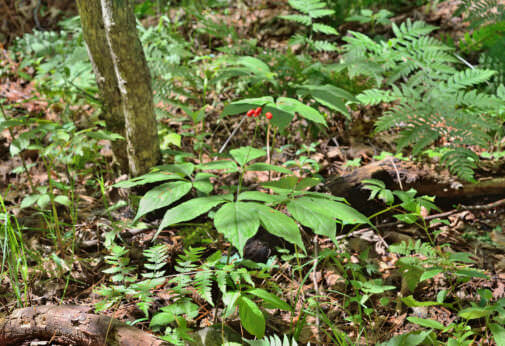
Lavender
This common garden plant has various commercial uses, including essential oil and value-added products like soaps and lotions. Profitableplantsdigest.com reports that one eight-acre lavender farm in the Northwest grosses more than $1 million per year from it’s various lavender products. But the simplest way to sell lavender, which requires minimal investment in time and equipment to produce, is as dried flower bouquets. A one-acre planting can produce about 12,000 bouquets per year, which are worth $10 each or more on the retail market.
Lavender grows in a wide variety of climates, but requires well-drained soil. Irrigation and fertilizer are generally not needed. The disease-resistant, fast-growing plants are easily propagated in a greenhouse by cuttings and will grow big enough to produce a sizable spray of flowers in their second year; lavender will continue to flower for 10 years or more after planting. Simply tie bunches of the flower stems together with twine and hang in a barn, shed, or other well-ventilated structure to dry for at least one week before bringing them to market.
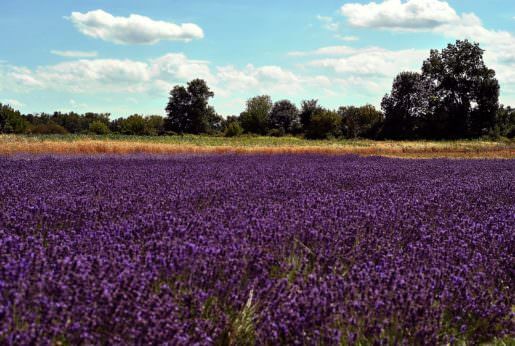
Goji Berries
This “superfood” is grown primarily in China, but the plant is equally well-adapted in North America. Dried organic goji berries regularly sell for $20 or more per pound, with the fresh fruit fetching a significantly higher price at farmer’s markets. With yields up to 7,000 pounds per acre in fresh berries, this is potentially a lucrative cash crop for American farmers.
Goji berries, a close relative of tomatoes, grow on head-high shrubs. They are disease-resistant and adapted to a wide range of soil and climatic conditions. In fact, the plants are so robust that they’re considered an invasive species in some regions of the country. For optimal fruit production, grow one of the named cultivars, like ‘Crimson Star‘ and ‘Phoenix Tears‘ (named varieties are not typically invasive). Light harvests can begin in the second year after planting, though it takes four to five years of growth before full production is reached. Planting goji shrubs “bare root” (when they are dormant) in late winter gets them off to fast start.
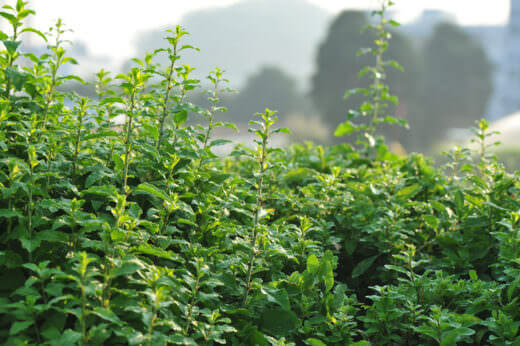
Bamboo
The most lucrative crops are not always edible. Bamboo, which is used for everything from flooring to fishing poles (and occasionally in Asian cuisine), is one shining example. Each of the many uses of bamboo comes with its own set of constraints; some applications require special processing, while others are only feasible in particular regions. However, it’s quite straightforward to grow bamboo for sale as nursery plants. Simply plant a grove, let it spread, and then pot up small clumps to sell to local nurseries or direct to consumers. A large clump of bamboo in 25-gallon tub can sell for $200 to $300 dollars. Thousands of tubs can be harvested annually from a single acre of mature bamboo.
Read More
Bringing Back the (Flax) Fields of Gold
American farmers want to grow flax, but there’s little infrastructure to support them. These projects are hoping to change that.
The first step is to identify which species of bamboo grow best, and are most in demand by consumers, in your area. This is easily accomplished by asking for advice at local nurseries. Bamboo is not grown by seed, but by transplanting small clumps of roots from an existing patch. Since many landowners consider it a pest, consider advertising locally to find people who will let you come remove their bamboo for free – a win for both parties. Since bamboo can spread aggressively, avoid planting it close to other crops or adjacent to natural areas (since it doesn’t spread by seed, you don’t have to worry about it escaping into the wild). Bamboo thrives on heavy irrigation and nitrogen fertilizer – any animal manure will do. Still, you’ll have to be patient. Depending on the variety, it may take anywhere from three to ten years to establish a patch large enough to start digging out clumps for sale.
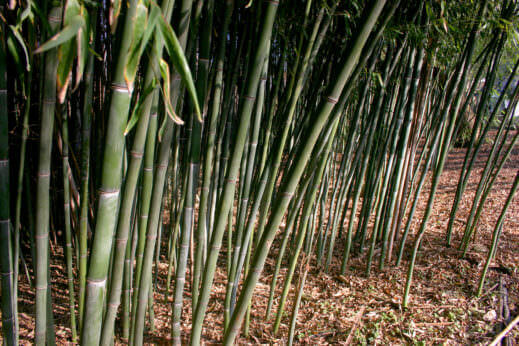
Follow us
This work is licensed under a Creative Commons Attribution-NoDerivatives 4.0 International License.
Want to republish a Modern Farmer story?
We are happy for Modern Farmer stories to be shared, and encourage you to republish our articles for your audience. When doing so, we ask that you follow these guidelines:
Please credit us and our writers
For the author byline, please use “Author Name, Modern Farmer.” At the top of our stories, if on the web, please include this text and link: “This story was originally published by Modern Farmer.”
Please make sure to include a link back to either our home page or the article URL.
At the bottom of the story, please include the following text:
“Modern Farmer is a nonprofit initiative dedicated to raising awareness and catalyzing action at the intersection of food, agriculture, and society. Read more at <link>Modern Farmer</link>.”
Use our widget
We’d like to be able to track our stories, so we ask that if you republish our content, you do so using our widget (located on the left hand side of the article). The HTML code has a built-in tracker that tells us the data and domain where the story was published, as well as view counts.
Check the image requirements
It’s your responsibility to confirm you're licensed to republish images in our articles. Some images, such as those from commercial providers, don't allow their images to be republished without permission or payment. Copyright terms are generally listed in the image caption and attribution. You are welcome to omit our images or substitute with your own. Charts and interactive graphics follow the same rules.
Don’t change too much. Or, ask us first.
Articles must be republished in their entirety. It’s okay to change references to time (“today” to “yesterday”) or location (“Iowa City, IA” to “here”). But please keep everything else the same.
If you feel strongly that a more material edit needs to be made, get in touch with us at [email protected]. We’re happy to discuss it with the original author, but we must have prior approval for changes before publication.
Special cases
Extracts. You may run the first few lines or paragraphs of the article and then say: “Read the full article at Modern Farmer” with a link back to the original article.
Quotes. You may quote authors provided you include a link back to the article URL.
Translations. These require writer approval. To inquire about translation of a Modern Farmer article, contact us at [email protected]
Signed consent / copyright release forms. These are not required, provided you are following these guidelines.
Print. Articles can be republished in print under these same rules, with the exception that you do not need to include the links.
Tag us
When sharing the story on social media, please tag us using the following: - Twitter (@ModFarm) - Facebook (@ModernFarmerMedia) - Instagram (@modfarm)
Use our content respectfully
Modern Farmer is a nonprofit and as such we share our content for free and in good faith in order to reach new audiences. Respectfully,
No selling ads against our stories. It’s okay to put our stories on pages with ads.
Don’t republish our material wholesale, or automatically; you need to select stories to be republished individually.
You have no rights to sell, license, syndicate, or otherwise represent yourself as the authorized owner of our material to any third parties. This means that you cannot actively publish or submit our work for syndication to third party platforms or apps like Apple News or Google News. We understand that publishers cannot fully control when certain third parties automatically summarize or crawl content from publishers’ own sites.
Keep in touch
We want to hear from you if you love Modern Farmer content, have a collaboration idea, or anything else to share. As a nonprofit outlet, we work in service of our community and are always open to comments, feedback, and ideas. Contact us at [email protected].by Brian Barth, Modern Farmer
July 17, 2017
Modern Farmer Weekly
Solutions Hub
Innovations, ideas and inspiration. Actionable solutions for a resilient food system.
ExploreExplore other topics
Share With Us
We want to hear from Modern Farmer readers who have thoughtful commentary, actionable solutions, or helpful ideas to share.
SubmitNecessary cookies are absolutely essential for the website to function properly. This category only includes cookies that ensures basic functionalities and security features of the website. These cookies do not store any personal information.
Any cookies that may not be particularly necessary for the website to function and are used specifically to collect user personal data via analytics, ads, other embedded contents are termed as non-necessary cookies.
Good morning, I am from the Republic of Moldova and I was interested in your production of a shofran, I have a few questions: how many bulbs are necessary for planting per hectare? What is the price of the shofran bulbs, the conditions and the landing time of the shofran, that is, the technology for growing shofran, which varieties are suitable. How to make an order and how to prepare the soil for planting. Is the cleaning done by hand or automated, that is, by a tractor and assembly by a combine or by hand? Waiting for your reply.… Read more »
All it takes is land and labor. I’ve been growing produce for market sales 7 years now. Anywhere from $200-$800 every Saturday. You have to have customers to sell to and that’s the limiting factor. With time you’ll figure out what sells best and you can adjust future crops accordingly. Depending on the population in your area and foot traffic at your local market. You can make a decent amount of money.
Good article, very interesting and informative. I live in North Phoenix, Arizona and my property is on 5 acres already zoned/considered farm property. We can probably utilize about 3 acres or more for farming. Do you feel Saffron and/or Lavender would be a good fit and profitable given Arizona’s climate and conditions. Would there be a market for it here?
Hello, I am a Emily, from New York. I am interested in opening a Saffron farm
in North America. I’m completely new to this and I would love some input from any Saffron farmers.
Hello,
I am a student at Asu. I am interested in opening a farm
Up after I graduate in north Phoenix. I’m completely new to this and I would love some input from any southwest farmers or somebody who started from the ground up.
Hey I am looking for a crop to grow in and around Savannah Ga area that is profitable besides peanuts or cotton have about 50 acres
Thanks for your article on Permaculture. I found this site researching info for my book about the push-pull of two 65 year old city-dwelling women, trying to respect the land while building a house on 12 acres in the country. The house is built, now trying out permaculture concepts.
What is the most profitable garlic to raise & sell
Have roughly 27 acres of land, with water through a ditch company. The land has been used for growing hay the last 100 yrs,and no chemicals or fertilizers of any kinds. Thinking about doing 10 acres in lavender.Anything you could say to help me would be incredibly appreciated. I am located in Stevensville, Mt. The Bitteroot Valley.
you can eat bamboo.